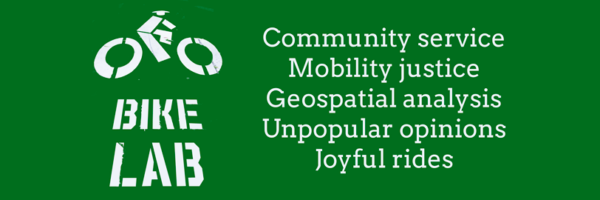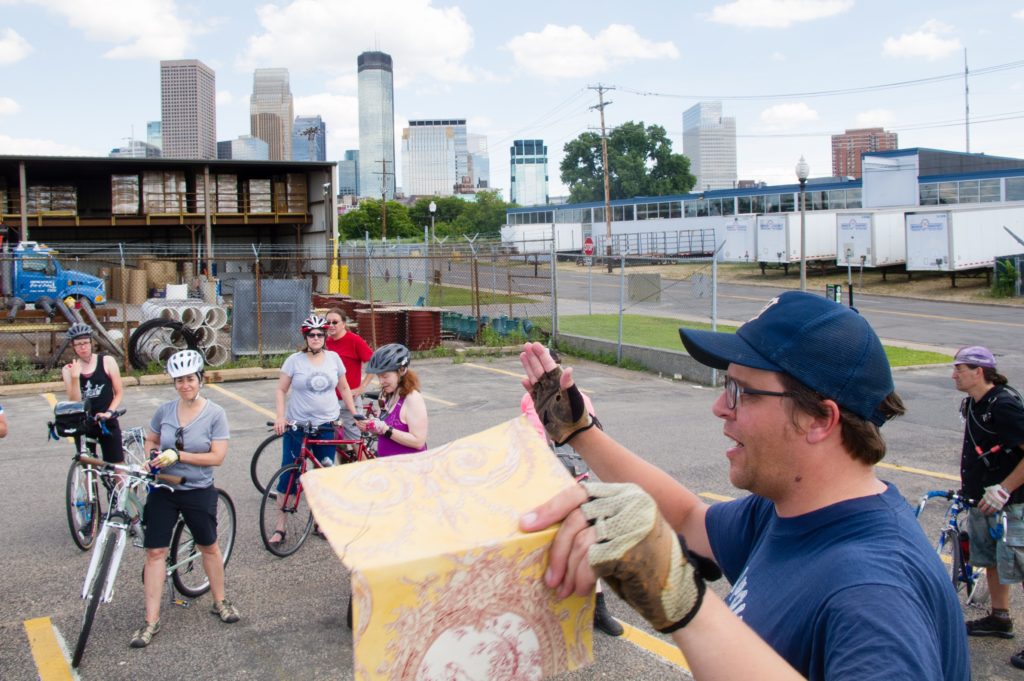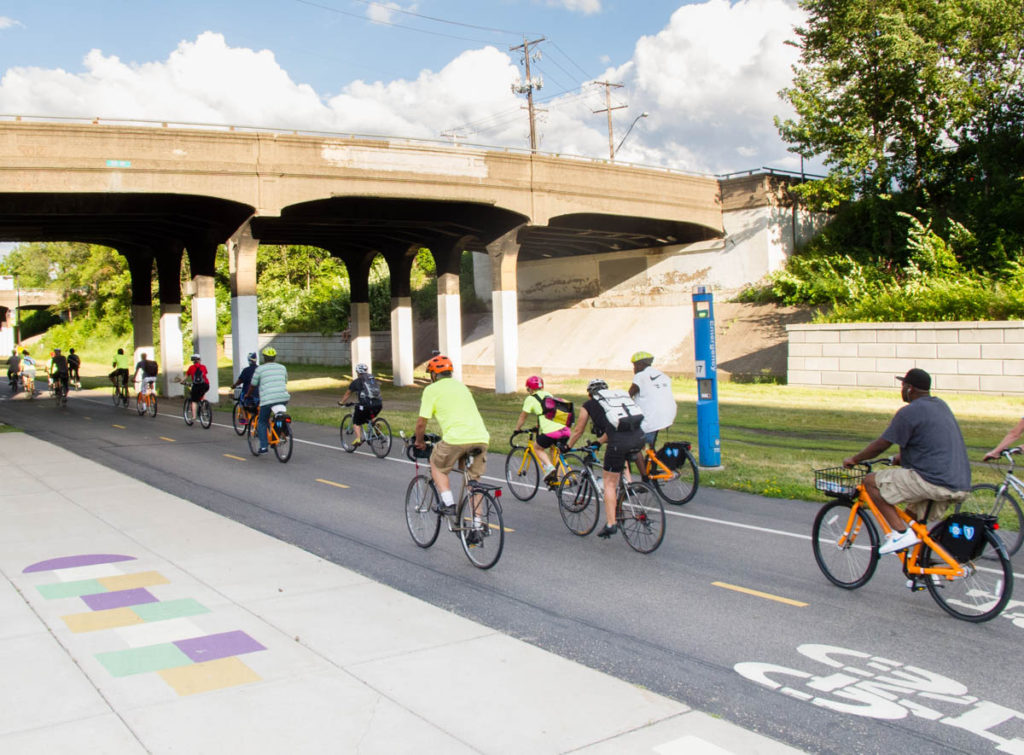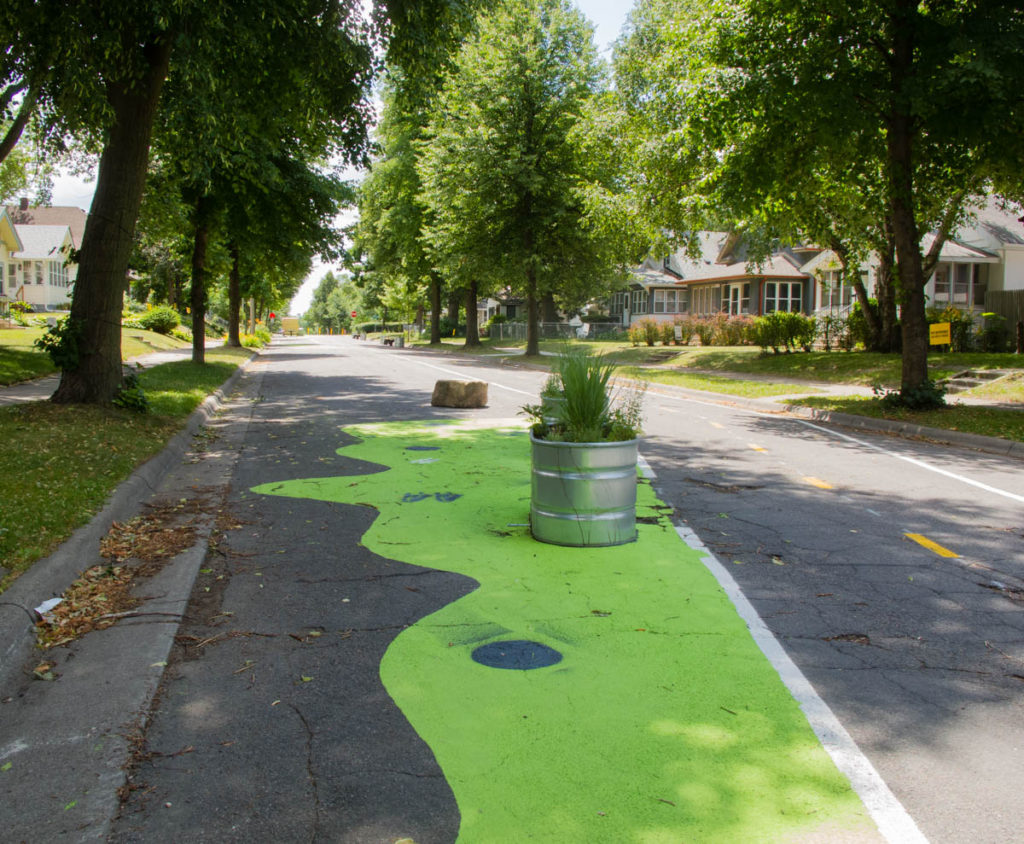Cycling and development
Andy Singer (who you may know from his “No Exit” cartoons) today posted on streets.mn about the possibility of re-purposing part of a railroad bridge across the Mississippi to extend the popular Midtown Greenway. For me, this resonated with my take-away from last week’s Mobility4All panel, of how bike infrastructure became associated with gentrification partly because the bike advocacy movement chose to pair infrastructure with economic development to gain political influence.






